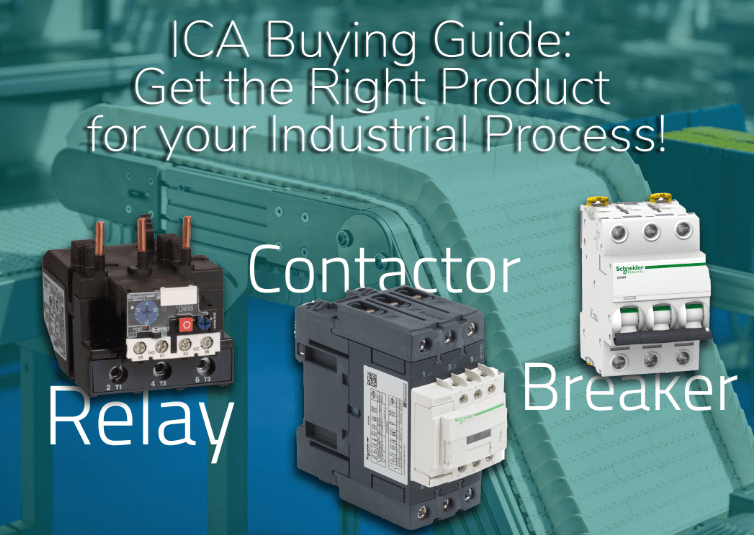This guide will be focusing on Relays, Contactors, and Breakers.
We understand sometimes you might not be exactly sure of the product you need, occasionally there are emergencies, and fast action is needed. Therefore, we created this guide to help you—help us get just what you need! When you know the answers to the following questions, finding the right product to fit your needs becomes simple!
When buying a Relay, you should know:
- What type of relay are you looking for?
- Thermal Overload relays: These electromechanical safety devices for the main circuit work in the event of phase failure or overload by offering reliable protection for the motors.
- Time relays: Their function is to start or stop currents from moving in armatures and coils by allowing electrical circuits to be released at specific times. Time relays are activated either by input currents or by the opening and closing of a signal. How do they operate? When power is applied to the coil, the contacts transfer, and they either connect (normally open contacts) or disconnect (normally closed contacts) the load. When the power is disconnected from the coil, the OFF-DELAY timing period starts; contacts stay transferred.
- Auxiliary relays: Auxiliary contacts/relays are generally used to deliver a signal to outside equipment, notifying when the supervised breaker has failed for any reason. They are also used to start a security shutdown, sound an alarm, engage a backup power source, and other procedures.
- Plug-in relays: These relays play a role when numerous circuits need to be controlled by one constant signal or when an engine or machine needs to control a circuit using a lower power signal. Plug-in relays plug into sockets; these sockets may be mounted on DIN rails or they may be mounted directly to a panel. Some relays are so small they fit into a lineup of sectional terminal blocks, almost looking like a terminal.
2. If you need a Plug-in relay, which serves a general-purpose, then: How many pins?
3. What voltage do you need?
4. Do you want it with or without a base?
When buying a Contactor, you should know:
The difference between a contactor and a relay:
A contactor connects 2 poles together without a mutual circuit between them, while a relay has a common contact that attaches to a neutral position. In addition, contactors are normally rated for up to 1000 V, whereas relays are generally rated up to only 250 V.
- How many poles?
- How many Amperes (Amps)?
- What coil voltage?
- Does the contactor need auxiliary contacts? If yes, then: How many closed contacts and how many open contacts?
When buying a Breaker, you should know:
Do you need a control breaker or a power breaker?
- Control breakers: automatic breakers and they are rail mounted. For this type of breaker, you should know: How many poles and how many amps do you need.
- Power breakers are big, they go from 12.5 Amps up to 3,200 Amps, and more.
Don’t hesitate to contact us, even if you do not know any information, we will do our best to help you find the right product. We have an extremely knowledgeable and expert team of representatives ready to assist you!
*You can also message us directly through whatsapp*

